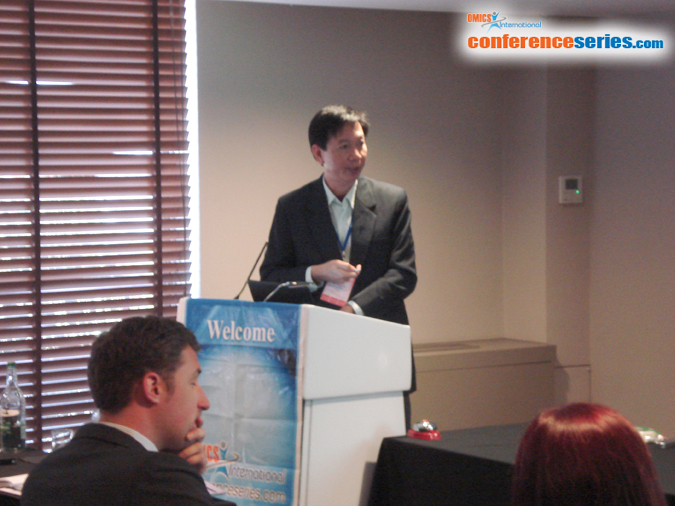
Ing-Hong Ooi
International Medical University, Malaysia
Title: Folate-conjugated star branched PLLA-b-(PEG)2 copolymer as nanocarrier for targeted delivery
Biography
Biography: Ing-Hong Ooi
Abstract
Folate-conjugated star-branched poly(L-lactide)-block-[poly(ethylene glycol)] copolymer are of interest as tumor-specific drug delivery system, targeting cancerous tumors overexpressed with folate receptors via receptor-mediated cellular uptake mechanism.The primary objective of this study was to synthesis and characterize folate-conjugated four-arm star-branched PLLA-b-(PEG)2 copolymers. The 4-arm star-branched copolymers with folate groups attached to the PEG chain ends were synthesized by a multi-step procedure using ring-opening polymerization and carbodiimide chemistry strategies. Briefly, in the first step, four-arm star branched PLLA was synthesised by a ring-opening polymerization of L-lactide in the presence of pentaerythritol as initiator and 4-dimethylaminopyridine DMAP/DMAP HOSO2CF3 as catalyst. The resulting polymer was activated with 4-nitrophenyl chloroformate (4-NPC), which was then reacted with aminoadipic acid (AAA) to afford AAA-terminated four-arm PLLA (P1). α-amino-ω-Folate-PEG was conjugated to P1 via carbodiimide chemistry to produce the title star-branched PLLA-b-(PEG)2 copolymer (P2). All synthesized polymers were precipitated in diethyl ether/methanol mixture followed by centrifugation and then purification by membrane dialysis against deionized water, using Spectra/Por membrane of appropriate molecular weight cut-off size, before being freeze-dried. FTIR and 1H NMR and GPC techniques were used to characterize and confirmed the synthesised intermediates as well as the target polymer P2. The nanoparticles of P2 loaded with a model drug were fabricated by using a modified emulsion solvent evaporation technique. The resulting nanoparticles average sizes ranged from 178-211 nm, with PDIs from 0.121 to 0.235, and zeta potentials from -13.2 to -19.9 mV before and after freeze drying. The drug release and cytotoxicity studies of the nanoparticles will be presented.



